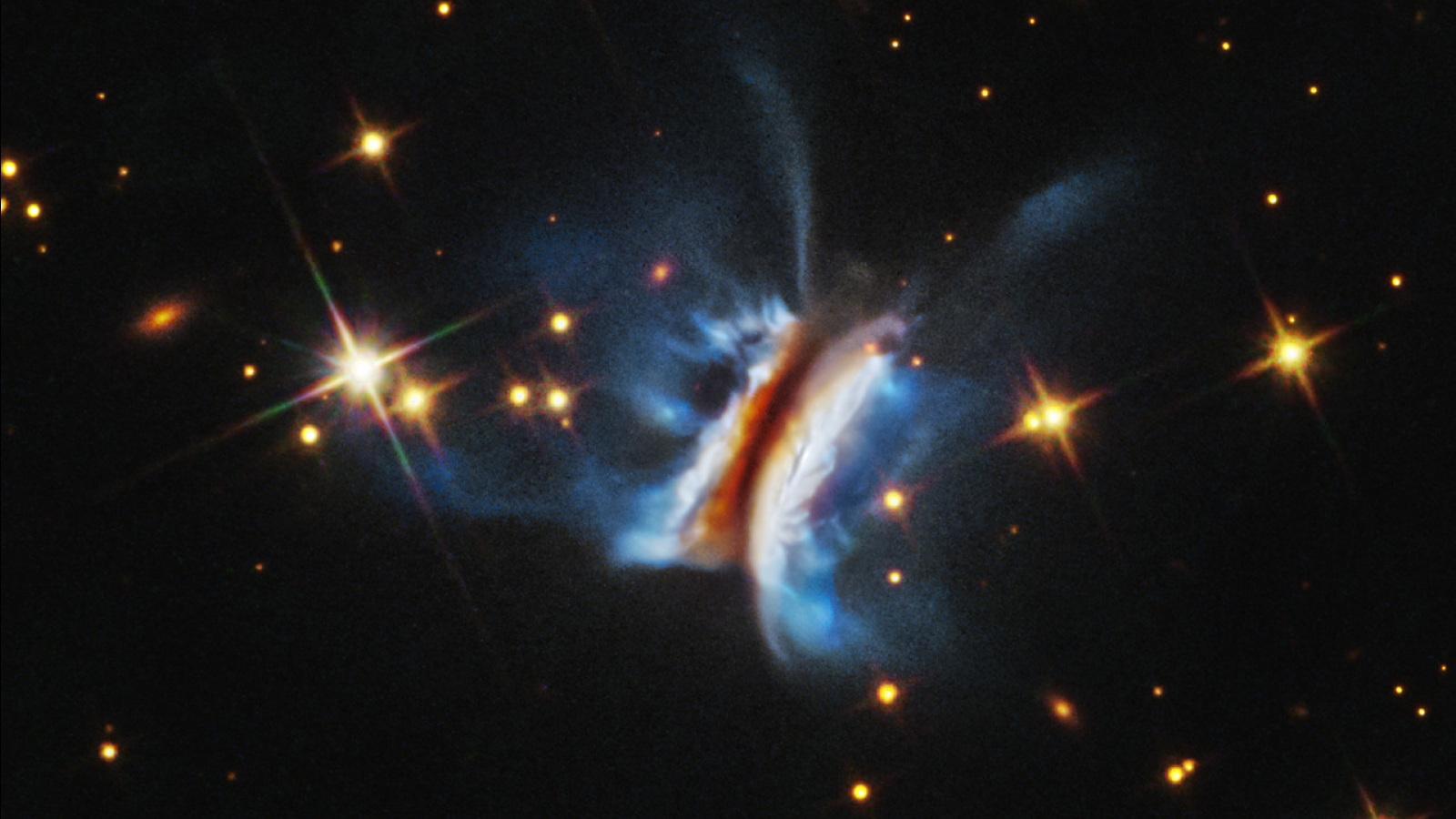Astronauts in Orbit Mark Big Space Anniversaries

Six astronauts on the International Space Station are celebrating two historic human spaceflight milestones from orbit today: the first human spaceflight by Soviet cosmonaut Yuri Gagarin, and the risky first launch of NASA's space shuttle era.
Fifty-one years ago today, on April 12, 1961, Gagarin became the first human to fly in space. His Vostok 1 mission lasted 108 minutes, during which time Gagarin made a full orbit around Earth.
To honor Gagarin's pioneering flight, space enthusiasts are holding "Yuri's Night" parties around the world, and the space station's crew plans to join in the revelry from 240 miles (386 kilometers) above Earth.
"The day that Yuri launched was really, really important," space station commander Dan Burbank of NASA told reporters via a video link Wednesday (April 11). "It basically set the foundation for a very wonderful and robust space program that we now enjoy cooperatively and internationally. We’re going to have a bit of a reduced schedule, enjoy a couple of meals together, which is something that often, with the busy tempo, we don’t get a chance to do. Most of us end up eating individually on the side as we go."
Sharing a meal together will allow the diverse crew — which includes two American astronauts, a Dutch astronaut and three Russian cosmonauts — to "think about the history of our space program up to this point, [and] talk about where we think we'll be going in the future," Burbank added.
But today also marks another important achievement in the history of human spaceflight: 31 years ago, on April 12, 1981, the space shuttle Columbia lifted off on the inaugural flight of NASA's shuttle program. [NASA's Space Shuttle Program in Pictures]
On that day, astronauts John Young and Bob Crippen launched into space aboard Columbia on the STS-1 mission, which was NASA's first manned mission since the Apollo-Soyuz Test Project in 1975.
Get the world’s most fascinating discoveries delivered straight to your inbox.
After 30 years of flying the space shuttle, NASA retired its orbiter fleet last year. The three remaining shuttles and a prototype test vehicle are now poised to be delivered to museums, where they will be put on public display.
"The shuttle did what it was best designed for," Burbank said. "It brought up some spectacular observatories in space, built this world-class laboratory that we have the privilege of living and working aboard for six months."
Before his current stint aboard the space station, Burbank flew two space shuttle missions, both on Atlantis.
"Having the space shuttles in museums, where people can see them, I think will be a good thing," he said. "I think that from a budgetary standpoint, it's going to help give NASA the wherewithal to design the next vehicles."
On April 17, the space shuttle Discovery will depart NASA's Kennedy Space Center in Cape Canaveral, Fla., and will travel piggyback on a modified 747 aircraft to the Washington Dulles International Airport, where it will be handed off to the Smithsonian National Air and Space Museum.
"On the one hand, it's sad to see the shuttles retired, on the other, [we're] happy to have the opportunity to move onto new and hopefully better vehicles in the future," Burbank said.
This story was provided by SPACE.com, a sister site to LiveScience. You can follow SPACE.com staff writer Denise Chow on Twitter @denisechow. Follow SPACE.com for the latest in space science and exploration news on Twitter @Spacedotcom and on Facebook.

Denise Chow was the assistant managing editor at Live Science before moving to NBC News as a science reporter, where she focuses on general science and climate change. Before joining the Live Science team in 2013, she spent two years as a staff writer for Space.com, writing about rocket launches and covering NASA's final three space shuttle missions. A Canadian transplant, Denise has a bachelor's degree from the University of Toronto, and a master's degree in journalism from New York University.
 Live Science Plus
Live Science Plus






